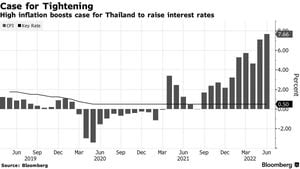Rare earth elements (REEs) serve as invaluable proxies across diverse geochemical studies, offering insights ranging from environmental processes to the origins of igneous rocks. Yet, the challenge of incomplete datasets has often rendered older but high-quality analyses ineffective. Fortunately, recent research has introduced innovative techniques to address this gap, empowering scientists to utilize existing datasets fully.
A collaborative effort among geoscientists from institutions including TU Dortmund and Constructor University has led to the development of polynomial modeling methods capable of imputing missing REE data, particularly from datasets deemed incomplete due to prior analytical techniques. Published on May 22, 2025, this study pushes the boundaries of geochemical analysis, providing scientists with the ability to deepen their interpretations of existing data.
Historically, the reliance on complete data for REE analysis has limited research progress. Modern analytical methods can omit certain REEs for various reasons, including quantification limits and analytical interferences. These missing elements can significantly impact the interpretation of REE anomalies, which highlight deviations from expected patterns.
The power of the new polynomial modeling approach lies in its ability to relate the atomic sizes of REEs to their normalized contents, effectively filling gaps left by previous analytical techniques. The researchers employed this method to analyze more than 13,000 samples from the PetDB database, demonstrating its applicability and robustness. Findings indicate strong fitting results with standard deviations falling below 6%, bolstered by Monte Carlo simulations to assess model uncertainties. According to the authors of the article, "Our results show significant potential for leveraging incomplete datasets to improve the quantification and interpretation of REE patterns."
Central to this research is the acknowledged need for comprehensive data, especially as older datasets often contain valuable insights yet remain underutilized due to their incomplete nature. The team was driven by the need to make long-term geological data more usable and accessible, reinforcing the principles of the FAIR data guidelines—making data Findable, Accessible, Interoperable, and Reusable.
Traditional anomaly quantification methods rely on precise measurements of neighboring REEs, and the absence of certain elements can lead to skewed interpretations. The polynomial modeling approach improves the quantification of these anomalies significantly. The study shows how, for certain rock types, the polynomial fit enhances the calculation accuracy of anomaly values. "The ability to impute missing REEs enhances the overall usability of historical geochemical data, aligning with efforts to make such data more FAIR," stated the authors of the article.
The findings indicate the polynomial modeling method is not only applicable to mafic and ultramafic rock samples but could also potentially be extended to other types of geochemical data with certain adjustments. The study calls for future applications to explore these new dimensions of REE analysis, including assessing interferences and improving methods for REE anomaly quantification.
With these modeling techniques, geoscientific research is poised to reclaim valuable insights previously buried under incomplete datasets, promising fresh perspectives on Earth’s geochemistry and the processes shaping it. The optimization of existing data sets will allow researchers to advance their studies by ensuring richer and more scientifically rigorous interpretations of REE distributions and anomalies.
Overall, this innovative approach taken by the researchers could revolutionize the field of geochemistry, making it possible for scientists to conduct more thorough and impactful analyses of rare earth elements, hence cementing their role as key indicators for geological processes.



